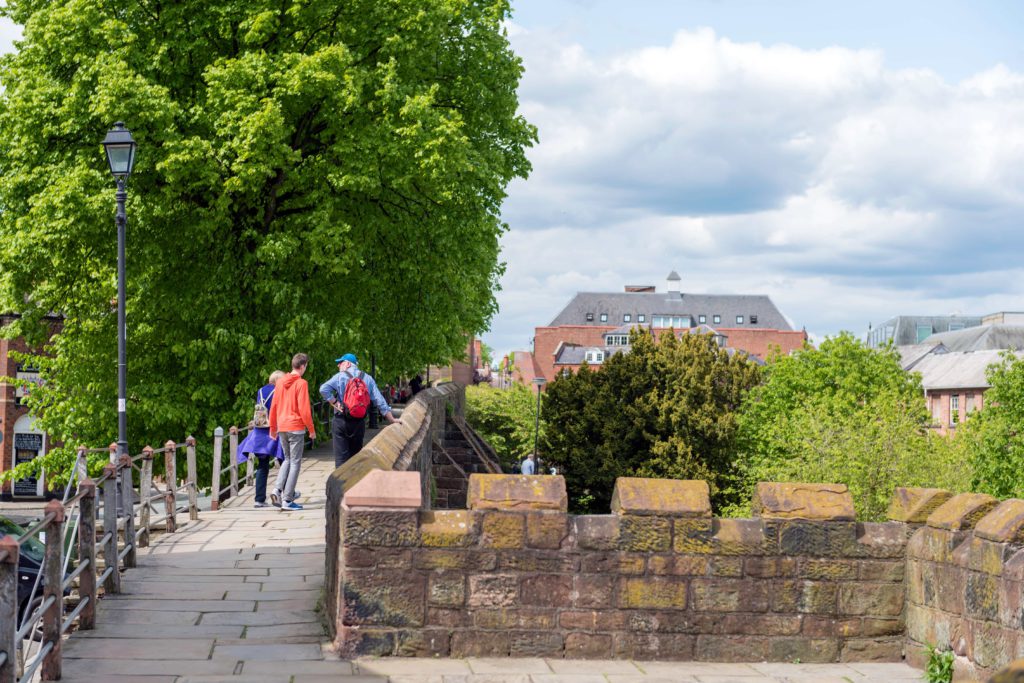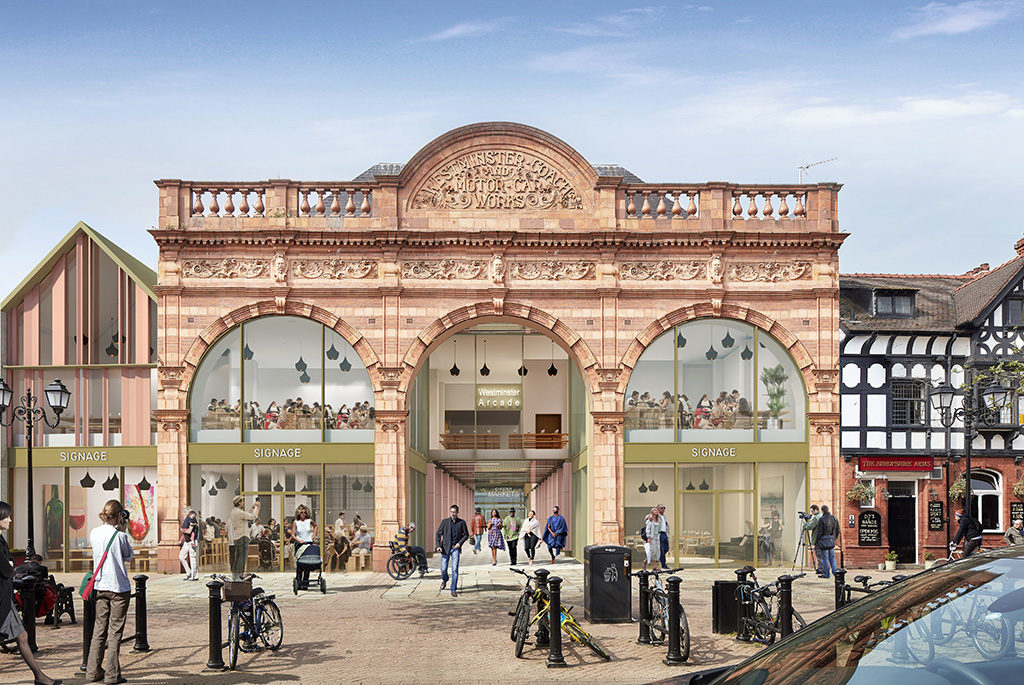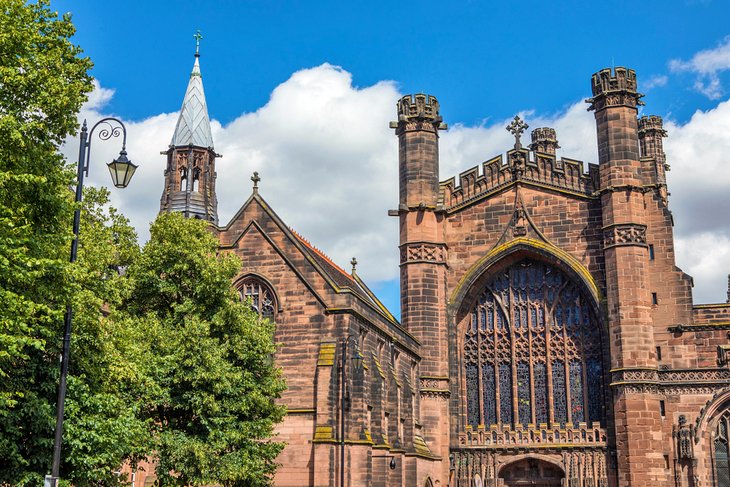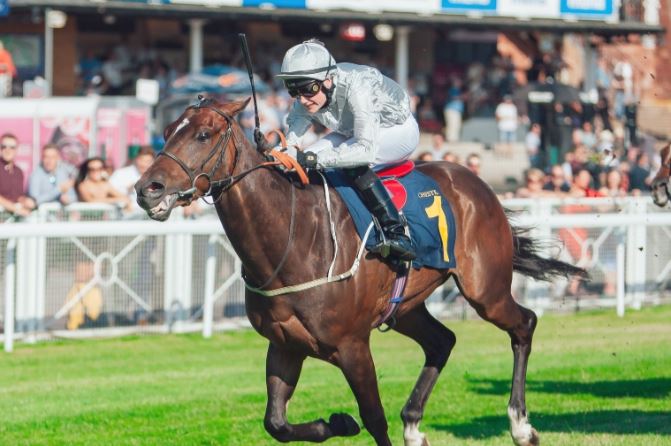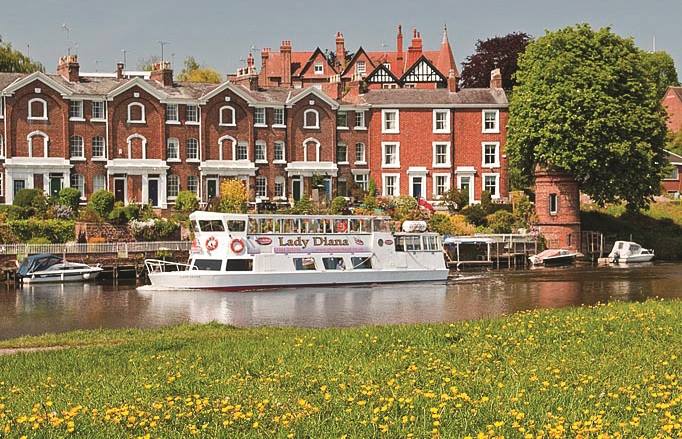
If you’re in Chester, make sure you enjoy the full experience by exploring the below from our Historic Roman Walls, the theatre with Storyhouse to all of our hidden gems and top locations! Click the below button for events.
Historic Roman Walls
Today only Chester has a complete circuit of historic walls around the city.
The Walls are about two miles long and were first built by the Romans nearly 2000 years ago. They were extended and developed in the Saxon period (10th century). During the 12th century, the Normans rebuilt and extended the Walls so for the first time since the Romans, the Walls formed a completed circuit around Chester.
Chester Zoo
Chester Zoo is a zoological garden in Upton-by-Chester, in Cheshire, England. It was opened in 1931 by George Mottershead and his family, which now holds animals such as Asian Elephants, Cheetahs, Bornean Orangutans and more. Over 2 million visitors a year visit, and with it only being 15 minutes away in the car from the city centre along with free parking… what are you waiting for!
Storyhouse
Storyhouse is a theatre, cinema and library along with a community hub where you can enjoy food and drink based in Chester’s historic city centre, presenting the best home-produced and internationally acclaimed work. Storyhouse opened in May 2017 and has continued to grow, being enjoyed by Cestrians and visitors ever since.
Northgate, Exchange Square
Step inside the astonishing entrance of the once Chester Library and you will be transported to a development of open streets, an arcade and square holding restaurants, the New Chester Market and more. Northgate opened November of 2022 with over 300,000 visitors of the new market in the first month!
Chester Cathedral
Chester Cathedral is many things to many people; a vibrant community of worship, an ancient abbey, an archaeological treasure, a cultural hub, a centre of musical excellence and a unique blend of medieval and modern history. Welcoming thousands of visitors from all over the world with activities available for both adults and children from a stroll through their gardens to one of the Tower Tours explore the magnificent building within the heart of Chester.
The oldest part of the Cathedral date back to 1093.
Eastgate Clock
The clock stands on the original entrance to the Roman fortress of Deva Victrix and is said to be the most photographed clock in England after Big Ben. The original gate was guarded by a timber tower which was replaced by a stone tower in the 2nd century, and this in turn was replaced probably in the 14th century. The present gateway dates from 1768 and is a three-arched sandstone structure which carries the walkway forming part of Chester city walls. In 1899 a clock was added to the top of the gateway to celebrate the diamond jubilee of Queen Victoria two years earlier. The clock was designed by the Chester architect John Douglas. The whole structure, gateway and clock, was designated as a Grade I listed building on 28 July 1955.
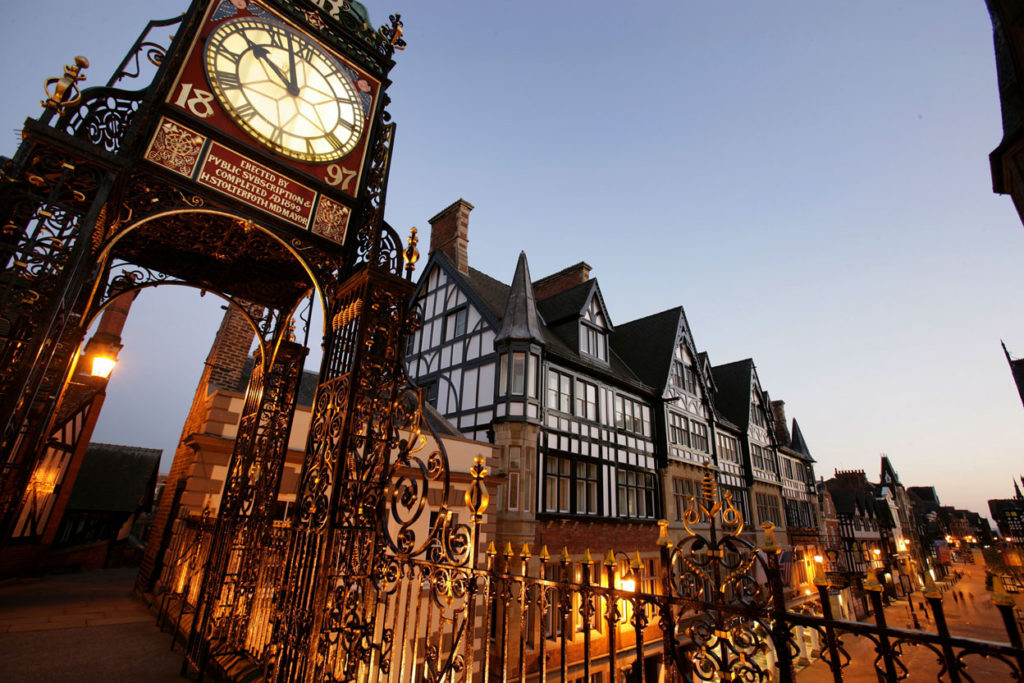
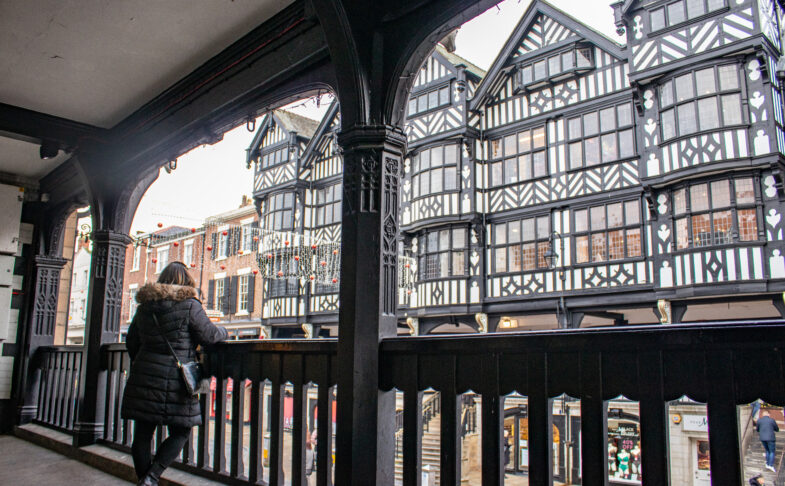
The Rows
The Rows are continuous half-timbered galleries which form a certain charm to Chester. Parts of the Rows form second and even third floors to ground level businesses, however most are singular shops, so be sure to explore by talking a walk up the steps! The Rows are unique in the world to Chester including some original 13th century buildings, including the Three Old Arches in Bridge Street, which have survived the ravages of time.
Chester Racecourse
Established in 1539, Chester is the oldest racecourse still in operation in the world. The racecourse has consistently been awarded the Gold Standard Award by the Racehorse Owners Association (ROA) since the award’s inception and was awarded the prestigious title of Large Racecourse of the Year, when the award was launched in 2015 and again in 2018 and 2019.
River Dee
The river is 70 miles long and stretches through Wales and Chester.
On the bank of the river is the ‘Groves’, a paved promenade complete with bandstand, cafés, restaurants and public houses. Take a stroll along the riverbank or propel yourself in a motorboat, a rowing boat or a pedalo.
Grosvenor Park
Grosvenor Park is a grade II* registered, green flag award winning park dating back to 1867 covering 20 acres. It’s our main ornamental park in Chester whose layout was designed by Edward Kemp. It is extremely popular with residents and visitors to the city alike. Situated just outside the city walls and overlooking the River Dee its one of the finest examples of Victorian parks in the UK.
Every summer the team behind Storyhouse bring their performances to the park with Grosvenor Park Open Theatre. The sounds of popping corks, picnics unpacked and happy audiences are now the defining sounds of Chester’s summer. And a great way to experience the park.
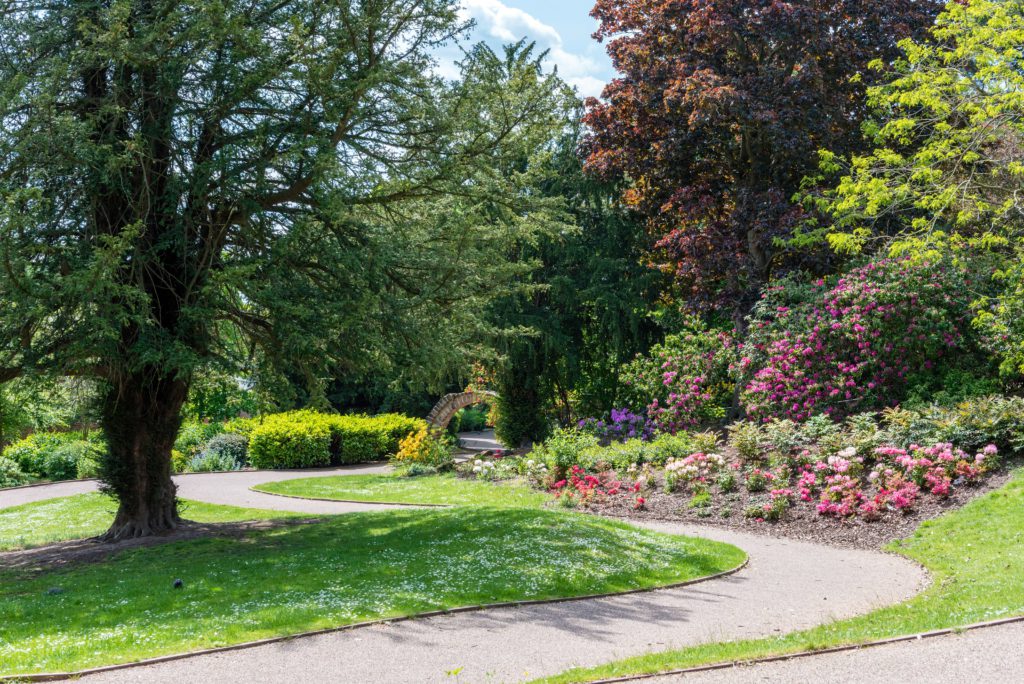
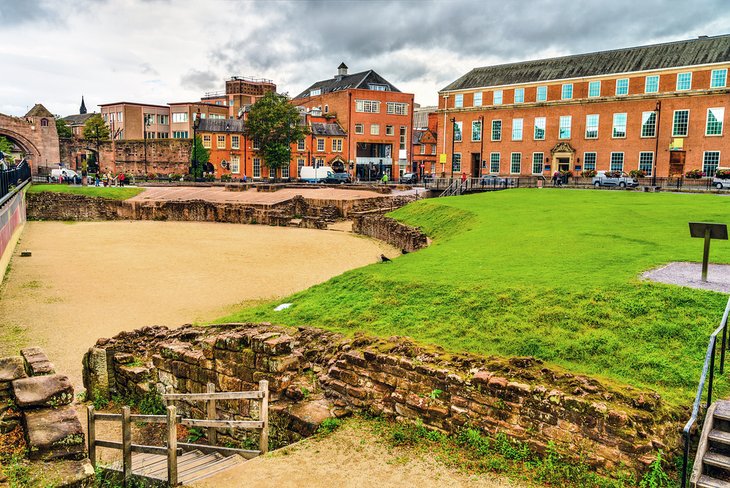
Roman Amphitheatre
The Roman amphitheatre at Chester was the largest in Britain. Used for entertainment and military training, there have been two stone-built amphitheatres on the site.
The first included access to the upper tiers of seats via stairs on the rear wall, as at Pompeii, and had a small shrine next to its north entrance. The second provided seat access via vaulted stairways. The two buildings differed from each other and from all other British amphitheatres, underlining the importance of Roman Chester.
Managed by Chester City Council.
Roman Gardens
The Chester Roman Gardens are a small garden and park complex close to Chester Roman Amphitheatre which contains a number of Roman finds and artefacts gathered from various sites in Roman Chester. Originally built in the early 1950s, the gardens were re-designed in 2001 and now provide a scenic spot to browse the Roman ruins and generally relax. The Chester Roman Gardens contain a range of remains from local Roman sites, including columns from the Roman gymnasium and carved fascias from the Deva Victrix Roman fortress. Also contained in the Chester Roman Gardens is a hypocaust – the underground heating system used by the ancient Romans. The information boards around the site provide useful explanations about the artefacts. The Roman Gardens are open throughout the year and are free to enter.
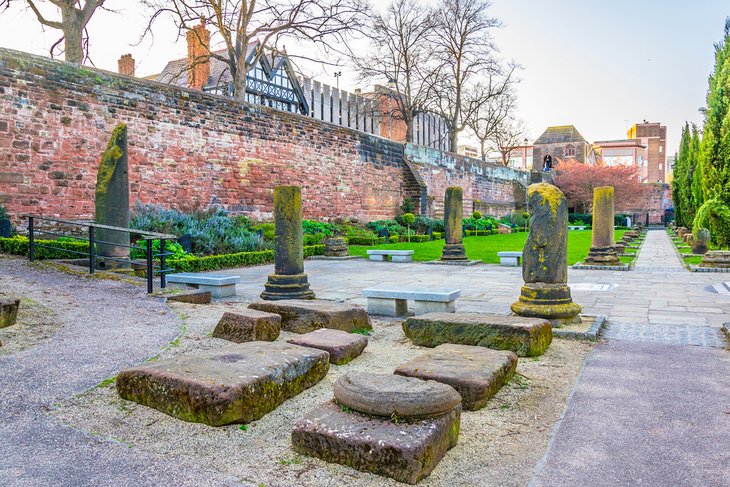
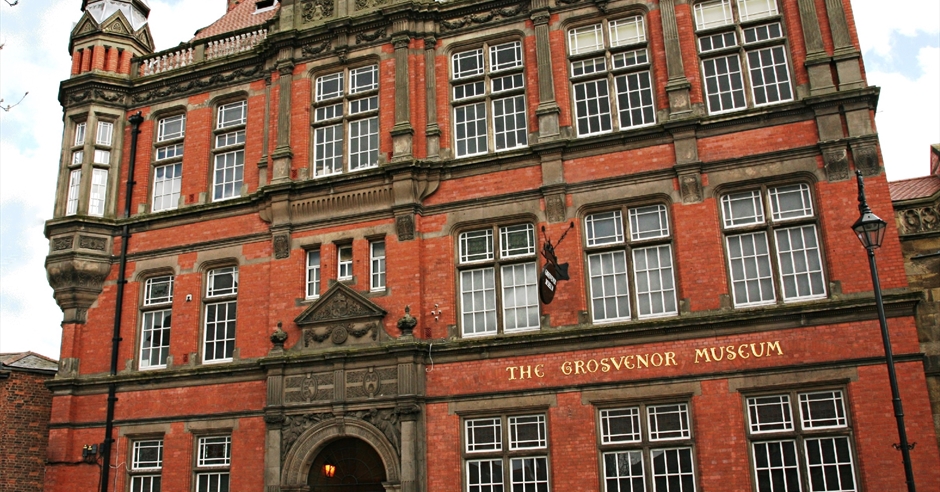
Grosvenor Musuem
The Grosvenor Museum houses collections exploring the history of Chester, its art and silver heritage, and its natural history. Find out about life during the Roman military occupation and visit the Period House, with rooms from the 17th century to the 1920s.
Admission to the museum is free, however they welcome a suggested donation of £3 per person.
#DogFriendly Chester
Dappled with green spaces, and more canine-friendly establishments than you can shake a stick at, Chester is the ideal location for a dog day out. Your furry friends can enjoy a walk whilst you also enjoy some shopping and the various hospitality venues!
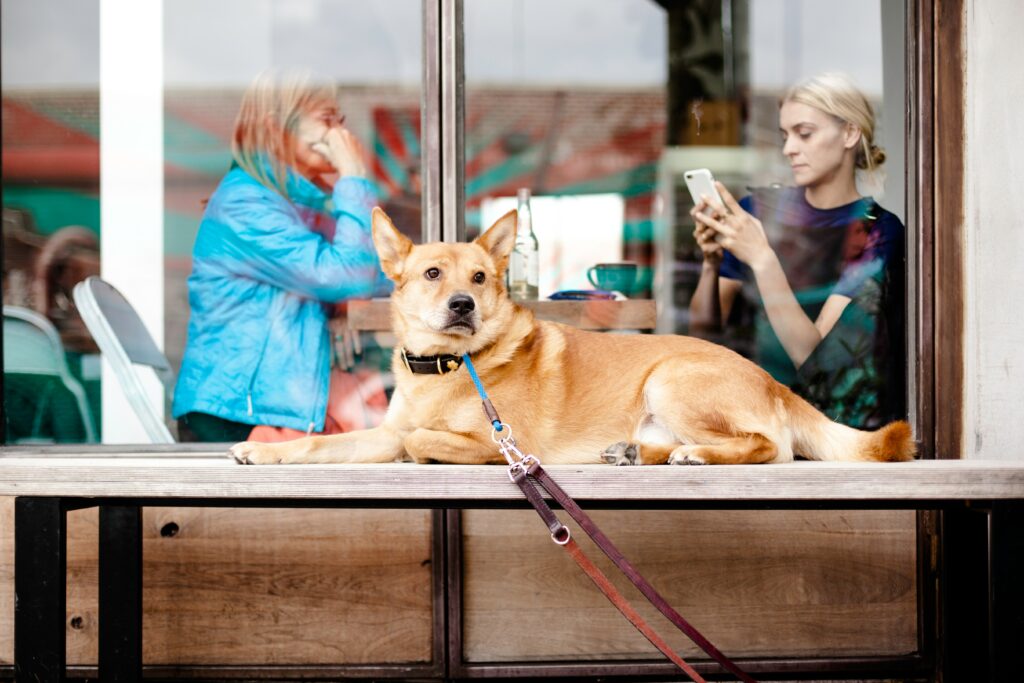
#MostInstagramableCity
Okay you’ve visited some of the big hot spots in Chester. Now it’s time to check out the hidden gems! Tag us in your pictures @Chester_BID using the hashtag #Chester #MostInstagramableCity
Chester Cross is a junction of streets at the centre of the city of Chester, Cheshire, England.
The streets meeting at the junction are Watergate Street, Eastgate Street, Bridge Street and Northgate Street. The junction consists of a staggered crossroads, with Watergate Street in continuity with Eastgate Street, and Bridge Street joining the junction to the west of Northgate Street. Watergate Street, Eastgate Street, Bridge Street were the main roads in Chester when it was a Roman fortress. To the north of the point where Bridge Street met the other streets was the Roman principia. It is thought that Northgate Street was driven through the ruins of the Roman buildings in the 10th century.
The centrepiece of Chester Cross is the Grade II listed building Chester High Cross, a medieval cross which was damaged in the Civil War, then removed elsewhere, and reinstated in its original position in 1975. Immediately to the north of Chester Cross is St Peter’s Church, a Grade I listed building. At the southeast corner of the junction is 1 Bridge Street, a Grade II* listed building. Today Chester Cross is a popular meeting point. During the summer months Chester’s town crier makes a midday proclamation from the steps of the High Cross.
Known as the Independent Quarter of Chester you can find this street bustling with different finds from antiques to art. Whilst you’re there you can also enjoy a coffee and a bite to eat from many of the independent coffee shops and restaurants.
The Groves is a River side walk on the North side of the River Dee starting at the end of Lower Bridge Street and finishing near Grosvenor Park. The area has many benches and a band stand. River Cruises are available April-October
At the southeastern corner of the walls are the wishing steps, added in 1785. Local legend claims that if you can run up and down these uneven steps while holding your breath your wish will come true.
Situated next to the Water Tower and the walls, the Water Tower Gardens is a key community city centre park where history, nature and sporting and play facilities for all ages all come together with a hugely popular wooden children’s play area bowling green, tennis court and putting area.
The Water Tower Gardens and the surrounding area are part of a designated Conservation Area and both the Tower and the Walls are scheduled Ancient Monuments on the National Heritage List for England as a designated Grade I listed building dating back as far as the 14th century.
Located off Tower Road next to the Water Tower and the city walls and the canal also runs alongside so it’s a great space for a stroll with the family. The gardens can be accessed by five different entrances; three of these are fully accessible to wheelchair users.
The park is open from 10am to sunset during British Summer Time (BST).
- Children’s Play Area
- Bowls
- Tennis Court
- Putting
- Community Pavilion
Three Old Arches is a building at 48 Bridge Street, Chester, Cheshire, England. Together with the adjacent building at No. 50, it is recorded in the National Heritage List for England as a designated Grade I listed building. The buildings incorporate part of the Chester Rows. The stone frontage at the street and row levels of No. 48 is considered to be the earliest shop front still surviving in England. It was once the largest known medieval town house in the Chester Rows, and the stone-walled hall at the row level extending to No. 50 was the largest hall set parallel to the rows in Chester.
The building was constructed in the 13th century. During the 14th century it was extended to the south (into what is now No. 50), when the hall, set parallel to the rows, was built. During the 20th century part of the building was used by William Jones, a grocer. In the 1960s the business was taken over by the department store of Owen Owen, but this closed in 1999. The ground floor continues to be used as a shop.
Chester Town Hall is in Northgate Street in the centre of the city of Chester, Cheshire, England. It is recorded in the National Heritage List for England as a designated Grade II* listed building.
In 1698 an exchange was built to accommodate the city’s administrators. This building burnt down in 1862. A competition was held to build a new town hall and this was won by William Henry Lynn of Belfast. The building cost £40,000 (equivalent to £3,930,000 in 2021). It was officially opened on 15 October 1869 by the Prince of Wales (the future Edward VII) who was accompanied by W. E. Gladstone, the Prime Minister. On 27 March 1897 the council chamber on the second floor was gutted by fire. It was restored by T. M. Lockwood the following year. In 1979 a clock was installed in the tower with three faces; there is no face on the west side of the tower. Queen Elizabeth II, accompanied by the Duchess of Sussex, attended lunch at the town hall during their visit to Cheshire on 14 June 2018.
Newgate is an arch bridge carrying the walkway of the city walls over Pepper Street in Chester, Cheshire, England. It is recorded in the National Heritage List for England as a designated Grade II listed building.[1]The bridge was built in 1937-38 to relieve traffic congestion in the city, especially at Chester Cross. This involved making a new breach in the city walls.
The bridge is constructed in red sandstone. It was designed by Sir Walter Tapper and his son, Michael. On each side of the bridge is a tower containing mock loops (unglazed slit windows) and surmounted by hipped roofs. Flights of steps on each side lead up to the towers and to the walkway across the top of the bridge. The structure is decorated with carved shields and Tudor roses. The historian Simon Ward expresses the opinion that “its design conformed to the generally medieval feel of the walls”.
There’s a special corner of our city that has been called both Harry Potter Lane and Chester’s Romantic Heart, and when you amble along the narrow, colourful and verdant Godstall Lane, you can see why: it oozes charm, is effortlessly chic and there’s an air of magic about the place.
Not everyone has come across this Chester gem, a lane that’s nestled between two of our best-known streets. It’s so neatly tucked away that it’s too easy to walk past yet it really is right at the heart of the city. One end of the lane leads to St Werburgh Street, with the magnificent Chester Cathedral, while the other leads to Eastgate Row, just above the hustle and bustle of one of the city’s main shopping streets.
Godstall Lane is one of only four medieval lanes to survive within the City Walls and is home to some great, vibrant businesses including a beauty salon, fashion boutiques, a wine school, bars and restaurants.
Formerly this area was known as St Michael’s Arcade, but more recently it has been renamed as St Michael’s Row. It dates to around 1912, is beautifully designed, and bears no similarity to Chester’s famous rows, which are nearby. The arcade links Bridge Street Row, which is behind the camera, and the Grosvenor Precinct.
The Chester Grosvenor Hotel is a hotel in Chester, Cheshire, England. The Grade II listed building was built between 1863 and 1865 and is owned by the Duke of Westminster.
The long-standing establishment features an on-site restaurant that was previously awarded a Michelin starsince 1990, however the restaurant failed to retain its Michelin Star in 2022’s Michelin Guide following an extended period of closure due to COVID-19. The restaurant has since reopened, and is in the process of being assessed for the absent Michelin Star. The hotel is now operated by Bespoke Hotels.
The Chester Grosvenor occupies a historic location on Eastgate, in the centre of Chester. It is next to the landmark Eastgate Clock and in close proximity to other notable features of the city, including Grosvenor Park, The Mall Chester, Chester Cathedral, and the ancient city walls.
Before the present building was constructed in 1863–66, the site was occupied first by the pub The Golden Talbot and later by The Royal Hotel. The Golden Talbot was recorded as being “ancient” in its 1751 mention in one of the local weekly newspapers and had been in operation during the reign of Elizabeth I. In 1784, the pub was demolished to make way for The Royal Hotel, built by the politician John Crewe. It became the headquarters of the Independent Party, who were the party opposed to the Grosvenor family (later to become the Dukes of Westminster). In 1815 it was purchased by Robert Grosvenor, who was at that time Earl Grosvenor (and who later became the 1st Marquess of Westminster). It was then renamed the Grosvenor Hotel, and it became the city’s “premier place to stay”. While it was in possession of the 1st Marquess’ son, Richard Grosvenor, 2nd Marquess of Westminster in 1863, this building was demolished.
The building now present on the site was originally called the Grosvenor Hotel. It was designed by the Chester architect Thomas Mainwaring Penson and was Penson’s last major work. It was completed after his death by his elder brother’s firm R. K. Penson & A. Ritchie. The hotel passed into the estate of the Duke of Westminster when Richard’s son, Hugh Grosvenor, was advanced to 1st Duke of Westminster in 1874. On 10 January 1972, the building was designated as a Grade II listed building.
The 12th-century Agricola Tower was the first stone gateway to Chester Castle, which had been founded by William the Conqueror in 1070 in the south-west part of the city. On the first floor is the chapel of St Mary de Castro, which contains some exceptionally fine wall paintings from about 1240. By climbing the nearby stairs to the wall-walk, you can appreciate the castle’s position within the city.
The remains of the Norman choir and medieval chapels which once formed St. John’s church stand, a romantic, roofless ruin, standing to the east of the present building, next to the Roman amphitheatre in Chester. The three east end chapels were left in ruin at the time of the Dissolution of the Monasteries. The building has a long and fascinating history. The first church on this site was founded as the great Saxon Minster of Mercia by the Anglo-Saxon King, Ethelred of Mercia, in 689, outside the ancient city walls. Legend relates how Ethelred had a dream, in which he was instructed by God to build a church “at the place where he sees a white hind”. Ethelred, Earl of Mercia the husband husband of Ethelflaeda, daughter of Alfred the Great- rebuilt and enlarged the church in the early tenth century, as part of their restoration of the Roman fortress. It is to St John’s church that King Edgar was rowed up the River Dee by sub- kings for consecration after his coronation in Bath. 40 Coins dating from the reign of the Saxon king Edward the Elder, son of Alfred the Great, have been found deep beneath the ruins. Earl Leofric of Mercia was said to be a “great benefactor” of the church in the eleventh century. Some fine examples of Viking/Anglo-Saxon cross heads are displayed in the nave of the St. John’s Church. Dating from around the tenth century, they are reputedly from the workshop established in the quarry of St Johns by Irish-Norse traders who settled in Chester during the tenth century. Similar crosses thought to have been from the same workshop have been found over a wide area. The cross heads were unearthed from the ruins of St. Johns during the 1870 restoration.
Soon after the conquest, the original Saxon church was later greatly extended by the Normans, in 1075 Peter de Leia , Bishop of Lichfield moved his see here after it was decreed that all bishoprics should be associated with major cities and commenced building on a new church on the ancient site of the Saxon church, the stone was dug from a quarry between the church and the River Dee. The building took the form of large cruciform cathedral cathedral with Nave, Chancel, Choir and Transepts.and building continued until the late thirteenth century. In the medieval period the church was a magnificent building, this original building covered twice the area of the structure which survives to the present day. The ruins visible today are the remains of the Norman choir and medieval chapels which once formed the east end of St John’s Church.
During the Parliamentary siege of Chester which took place during the Civil War the church was used by the Roundhead forces, who fixed a cannon onto the top of the tower. This was used to bombard the town and breach the city walls at the present Roman gardens. (Repairs to the damage can still be seen in the wall by the garden). During excavations at the Roman Amphitheatre site musket balls dating from this period were found in front of the church. In the eighteenth century, a large house known as Priory House was constructed over part of the site, which was occupied by Mrs de Quincey, mother of the author Thomas de Quincey. The house was demolished in 1871. Until the late nineteenth century the ruins were enclosed by a high wall. Excavations in 1871 which removed mounds of accumulated soil and rubble, revealed many fine stone bosses on the site, which are now displayed in the ruins. The coffin displayed high on the walls, inscribed ‘Dust to Dust’, was placed there to fill a gap in the unstable masonry. But it is a genuine solid oak coffin from the fourteenth century. The chapels at St. John were chantry chapels, where prayers were regularly said for the souls of the dead. One of these was built in memory of Sir Peter Roter, Lord of Thornton, who funded repairs to the church in 1349 and had a stone vaulted roof. This area around St. John’s is said to be haunted by a monk. He is said to appear in a cowl and speaks to people in Anglo-Saxon.
Chester Weir is a weir which crosses the River Dee at Chester, Cheshire, England, slightly upstream from the Old Dee Bridge. The weir and the associated salmon leap are recorded in the National Heritage List for England as a designated Grade I listed building.
The Old Dee Bridge in Chester, Cheshire, England, is the oldest bridge in the city. It crosses the River Dee carrying the road that leads from the bottom of Lower Bridge Street and the Bridgegate to Handbridge.
Edgar’s Field is a public park in Chester’s southern suburb of Handbridge immediately south of the River Dee near the Old Dee Bridge.
Find Directions Here
The Grosvenor Bridge is a single-span stone arch road bridge crossing the River Dee at Chester, England. Located on the A483 Grosvenor Road, it was designed by Thomas Harrison and opened by Princess Victoria of Saxe-Coburg-Saalfeld on 17 October 1832. The first traffic passed over it in November 1833.
At the time of its construction, the bridge was the longest single-span stone arch bridge in the world, a title that it retained for 30 years. It is recorded in the National Heritage List for England as a designated Grade I listed building.
Views upriver include Chester Castle and Handbridge, the impressive mansions of Curzon Park and the adjacent Roodee. Water levels of the tidal Dee vary significantly during the day.
Chester Shot Tower, also known as Boughton Shot Tower, is a grade-II*-listed shot tower located in the Boughton district of Chester, England. The tower stands beside the Shropshire Union Canal and forms part of the disused Chester Leadworks. Built by Walkers, Parker & Co. in 1799, the tower is the oldest of three remaining shot towers in the UK, and probably the oldest such structure still standing in the world.
The circular red-brick tower is 168 feet (51 m) tall and 30 feet (9.1 m) in diameter at the base tapering to 20 feet (6.1 m) at the top, with small arched windows. A lift shaft dating from 1971 was removed in 2020; the interior retains a spiral staircase and melting pots.







